
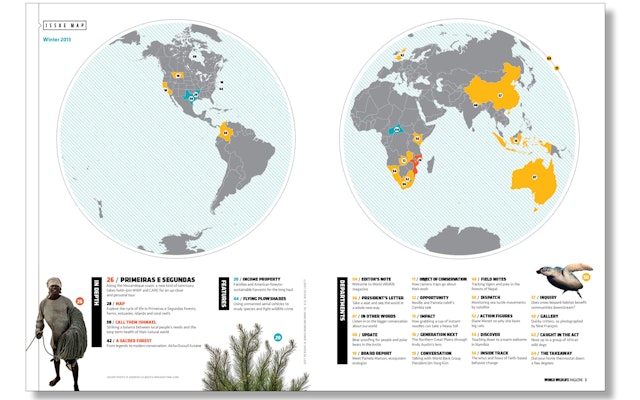
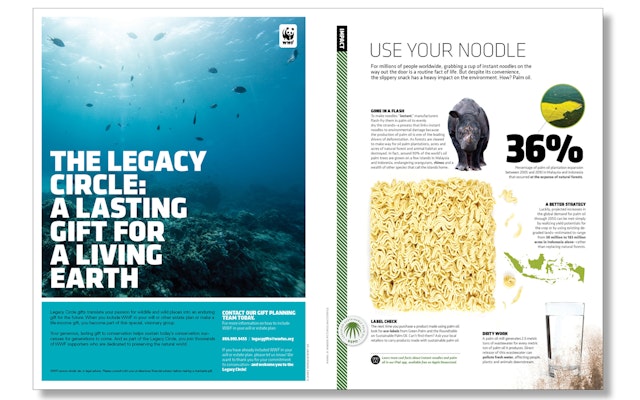



At times the cover detail is a semi-obscure, abstract pattern and the species it represents may not be immediately recognizable. When the reader turns the page to the magazine's first spread, a photograph of the animal and the conservation story involving the species on the cover is revealed.



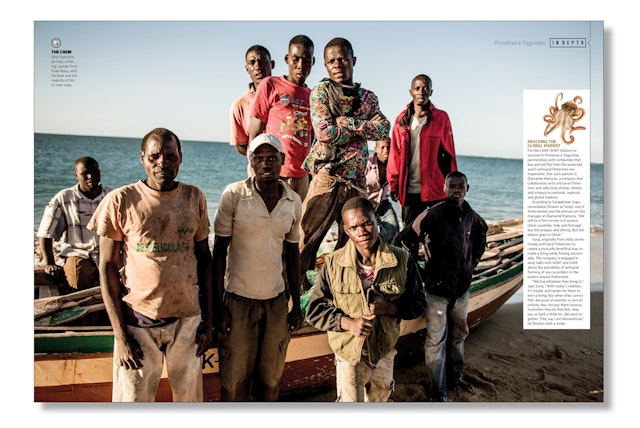
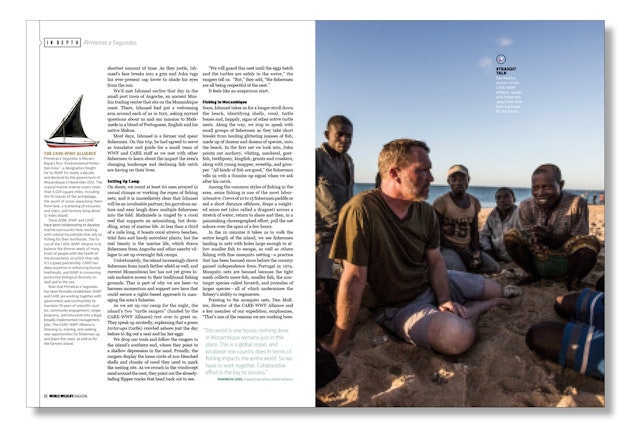
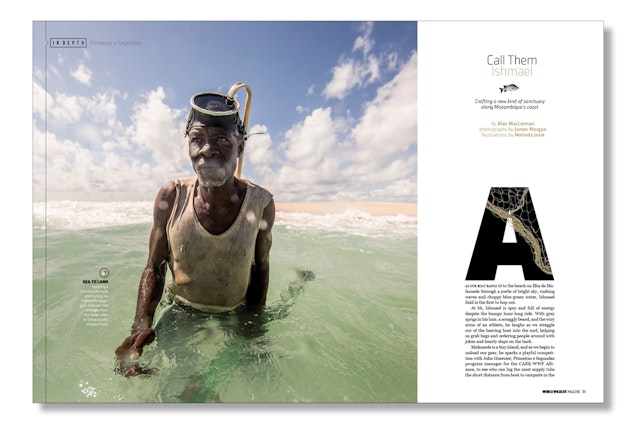
Pentagram designed World Wildlife Magazine, a new publication for the World Wildlife Fund based in Washington, DC. The World Wildlife Fund—the group with the iconic Panda logo—is the world's leading conservation organization. The WWF works in 100 countries and is supported by 1.2 million members in the United States and close to 5 million around the world. WWF's unique way of working combines global reach with a foundation in science, involves action at every level from local to international, and ensures the delivery of innovative solutions that meet the needs of both people and nature.
When the WWF started envisioning World Wildlife Magazine they knew they wanted to find new ways to inspire their members and partners, connect them to nature, and bring them closer to their conservation work through vivid storytelling, compelling photography and first-class design. In addition to the flagship print publication, Pentagram also designed a smaller digest of the magazine that includes a collectible wildlife poster that can be pulled out and framed or hung on the refrigerator and a tablet app adaptation of the magazine.
The Pentagram team devised a distinctive cover format for World Wildlife that features a macro image of an animal's fur, skin or bone on every issue. At times the cover detail is a semi-obscure, abstract pattern and the species it represents may not be immediately recognizable. When the reader turns the page to the magazine's first spread, a photograph of the animal and the conservation story involving the species on the cover is revealed. The launch issue of World Wildlife features a close-up of the tusk of an African elephant in Namibia and the reveal spread shows two of the elephants sparring playfully with their tusks. The corresponding text tells the story of the WWF's global efforts to curb ivory poaching and other wildlife crime.
The premier issue features a story on WWF's conservation efforts in Africa by its Editorial Director, Alex MacLennan, including a night he spent talking with fisherman off Mozambique's coast. The remote archipelago of Primeiras E Segundas is Mozambique's first "Environmental Protection Area"—a designation fought for by the WWF for nearly a decade. The 18-page package is accompanied by photographs of the the new coastal marine reserve and its inhabitants by James Morgan.
Other photo-heavy departments include a piece about a Canadian hamlet's effort to coexist with polar bears, a picture-story about researchers tracking tigers and their prey in Nepal, and a story about saving sea turtles off Gorgona Island in Colombia. "Gallery," a 4-page nature-infused portfolio, features the whimsical black-and-white animal photographs of Austin photographer Nine François. "Flying Plowshares" is a feature about advances in the use of unmanned aerial vehicles to study animals and to fight wildlife crime and "Income Property," about the forest conservation efforts in the Piney Woods near Texarkana features photographs by East Texas native Rufus Lovett.
The designers also infused the new publication with stylistic infographics and maps. A single-page column called "Impact" graphically lays out the effects a cup of instant noodles has on the environment and "Object of Conservation," featuring a 3-D photographic diagram, explains how a camera trap works.
